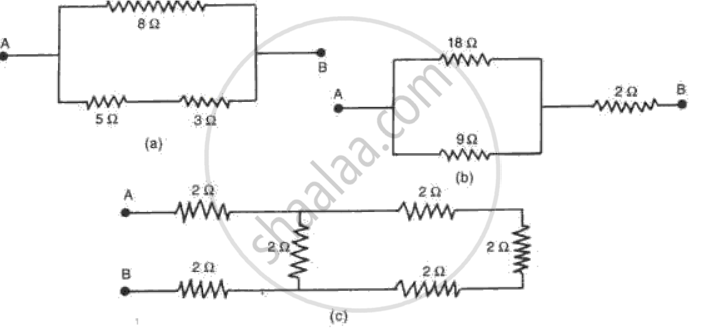Advertisements
Advertisements
प्रश्न
Point out two differences between e.m.f. and potential difference as applied to electric circuits.
उत्तर
Electromotive force or e.m.f. of a cell is potential difference between its two electrodes when it is in open circuit, i.e., not sending current in the external circuit; while potential difference is the difference in potential between the terminals when the cell is in closed circuit or it is sending current in the given circuits, e.m.f. is always greater than potential difference or terminal voltage of a cell on account of energy being spent in driving charge through the circuit.
APPEARS IN
संबंधित प्रश्न
A current of 5 amperes flows through a wire whose ends are at a potential difference of 3 volts. Calculate the resistance of the wire.
How is the electric potential difference between the two points defined? State its S.I. unit.
What is the combined resistance of each of the networks between A and B shown in fig. ?

Write an expression for the electrical power spent in flow of current through a conductor in terms of current and resistance.
Five resistors of different resistances are connected together as shown in the figure. A 12 V battery is connected to the arrangement.

Calculate:
(i) the total resistance in the circuit
(ii) the total current flowing in the circuit.
Potential near a charge is the measure of its ______ to bring a positive charge at that point.
If P and V are the power and potential of device, the power consumed with a supply potential V1 is:
100 J of heat is produced each second in a 4 Ω resistor. The potential difference across the resistor will be:
Assertion (A): Charges flow from higher potential to lower potential.
Reason (R): Current flows mainly due to the flow of electrons.
What is the measure of the work done on the unit positive charge to bring it to that point against all electrical forces?
